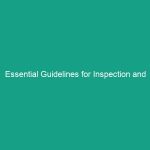Introduction
Good morning team! Today, we are going to discuss a crucial aspect of our Workplace Safety: Essential Guards. Understanding and implementing Safety Measures is not just a regulatory requirement—it’s vital for protecting our health and well-being while on the job. By the end of this talk, you will have practical tips and insights on how to safeguard yourselves and each other. So let’s dive in!
Understanding Essential Guards
Essential Guards refer to the Safety mechanisms and protocols designed to protect employees from Hazards in the workplace. These guards are crucial in preventing accidents and injuries, ensuring that everyone goes home safe at the end of the day. It’s important to realize that these protections not only enhance our physical Safety but also contribute to a more productive work Environment.
Many employees might think that Safety Measures are just barriers to productivity. However, the reality is that when we prioritize safety, we minimize disruptions caused by accidents, thereby enhancing our overall efficiency.
Key Hazards, Risks, and Safety Considerations
In any workplace, there are inherent risks associated with daily operations. Some of the common hazards include:
- Machine Hazards: Unprotected machinery can cause severe injuries.
- Slips, Trips, and Falls: These are among the leading causes of workplace injuries.
- Electrical Hazards: Improperly maintained electrical systems can lead to serious accidents.
- Ergonomic Hazards: Poor workstation setup can lead to chronic injuries.
Ignoring these risks can result in real-world consequences, such as injuries or even fatalities. It’s essential to recognize these hazards and take proactive measures to mitigate them.
Best Practices, Procedures, & Actionable Advice
To effectively implement essential guards, follow these Best Practices:
1. Use Protective Equipment
Always wear the necessary Personal Protective Equipment (PPE) suited for your job. This includes:
- Safety glasses
- Hard hats
- Ear protection
- Gloves
2. Follow Lockout/Tagout Procedures
Before servicing any machinery, ensure that it’s properly shut down and locked out to prevent accidental startup. This procedure is critical for your safety.
3. Maintain a Clean Workspace
A tidy workspace reduces the risk of slips, trips, and falls. Always clean up spills immediately and keep walkways clear.
4. Report Hazards Promptly
If you notice any hazards, report them to your supervisor immediately. Early intervention can prevent accidents.
5. Participate in Safety Training
Engage in all safety training sessions offered by your employer. Knowledge is a powerful tool in maintaining a safe work environment.
Consider the following real-world incident: At a manufacturing plant, a worker ignored the lockout/tagout procedure, resulting in a severe injury. This incident could have been avoided had the protocols been followed diligently.
Regulations, Standards, and Compliance
Compliance with safety Regulations is not just a legal obligation; it’s essential for ensuring a safe workplace. Familiarize yourself with relevant regulations such as:
- OSHA (Occupational Safety and Health Administration) standards
- ISO (International Organization for Standardization) requirements
- Your company’s specific safety protocols
Understanding these regulations helps you recognize the importance of compliance in protecting yourself and your colleagues.
Employee Engagement & Discussion
Now that we have discussed essential guards and safety tips, let’s open the floor for discussion. Think about this question: What safety challenges have you encountered related to our essential guards? Your experiences can provide valuable insights and contribute to our collective safety culture.
Conclusion & Key Takeaways
In summary, understanding and implementing essential guards is crucial for maintaining a safe workplace. By following protective measures, reporting hazards, and participating in safety training, we can significantly reduce risks.
Remember, safety is everyone’s responsibility. Let’s commit to making safety a priority in our daily operations. Thank you for your attention and dedication to creating a safer workplace.


